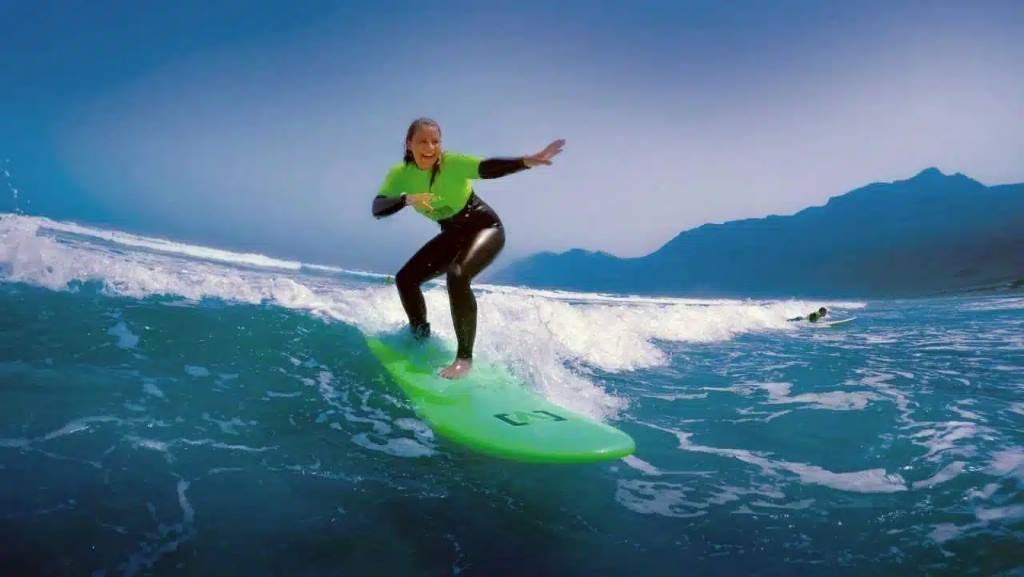Surfing is more than a sport; it’s a dance with the ocean, a story of rhythm and flow. Imagine standing on a board, gliding across a wave, feeling the pulse of the sea beneath your feet. Among the many techniques surfers use, “pumping” stands out as a skill that transforms a ride into something magical. Pumping in surfing is the art of generating speed by moving up and down the wave’s face, keeping the board in sync with the wave’s energy. Whether you’re a beginner or a seasoned surfer, understanding this technique is key to mastering the waves. To dive deeper into surfing culture, explore New York Big Event to know about local competitions and gatherings that celebrate this vibrant sport.
The Basics of Pumping in Surfing
Pumping is a fundamental technique that allows surfers to maintain and build speed while riding a wave. By shifting their weight and bending their knees, surfers move their board up and down the wave’s face, harnessing its energy. This motion propels the board forward, enabling longer rides and setting up for tricks like cutbacks or aerials. Think of it as pedaling a bike downhill—you’re not just coasting but actively pushing for momentum. According to a 2021 study by the International Surfing Association, mastering pumping can increase a surfer’s ride time by up to 30%, making it a critical skill for competitive and recreational surfers alike.
The technique starts with a good bottom turn to position the board on the wave’s face. From there, surfers compress their bodies, bending low, then extend upward while steering the board. Timing is everything—too slow, and you lose the wave; too fast, and you might overshoot. For beginners, practicing on smaller waves helps build confidence. I remember my first attempt at pumping on a gentle Long Island wave; my shaky legs barely kept up, but the thrill of gaining speed was unforgettable.
Why Pumping Matters in Surfing
Pumping isn’t just about speed; it’s about control and connection with the wave. Each pump keeps the surfer in the wave’s “pocket,” the sweet spot where the wave’s power is strongest. Without pumping, a surfer risks stalling or falling behind, ending the ride prematurely. This technique is especially crucial in smaller waves, common at new york surf spots like Rockaway Beach or Montauk, where generating speed is harder. A 2023 report from Surfline noted that surfers who effectively pump can extend their rides by 20-40% on low-energy waves, highlighting its importance in diverse conditions.
Beyond mechanics, pumping adds style. Watching a skilled surfer pump along a wave is like watching a dancer glide across a stage—fluid and purposeful. For me, learning to pump transformed my surfing. On a trip to Long Beach, I finally nailed the rhythm, feeling the board respond as I synced with the wave. It wasn’t just about going faster; it was about feeling alive, part of the ocean’s story. For surfers, pumping is a bridge between skill and expression, making every ride a unique tale.
Read More:
Pro Taghazout Bay Surfing Event 2025
Top Reasons to Work as a Sports Journalist
How to Master Pumping: Tips for Beginners

Mastering pumping takes practice, but the payoff is worth it. Start by choosing the right wave—small to medium-sized waves are ideal for learning. Position yourself near the wave’s crest, where the energy is strongest, and focus on your stance. Keep your knees bent and your body low to maintain balance. As you pump, shift your weight forward and backward, using your core to guide the board. Timing is critical; watch the wave’s shape and adjust your movements to stay in its pocket.
Here are some practical tips to get started:
- Practice on a longboard: Its stability makes pumping easier for beginners.
- Focus on rhythm: Pump in sync with the wave’s flow, not against it.
- Use your core: Engage your abdominal muscles for better control.
- Watch pros: Study videos of surfers at surf spots to see pumping in action.
I struggled with timing at first, often pumping too early and losing the wave. But after watching local surfers at Rockaway Beach, I learned to feel the wave’s rhythm. According to the World Surf League, consistent practice can improve pumping proficiency by 25% within a month.
Pumping in Different Wave Conditions
Pumping adapts to the wave’s personality. On fast, steep waves, surfers use quick, short pumps to keep up with the wave’s pace. In contrast, slower waves require longer, more deliberate pumps to build speed. Understanding wave conditions is key. For instance, point breaks offer smooth, predictable waves ideal for practicing, while beach breaks demand quicker adjustments due to their unpredictability. A 2022 study by Coastal Research Journal found that surfers adapt pumping techniques based on wave height, with smaller waves needing 15-20% more pumps to maintain speed.
My experience at Montauk taught me this adaptability. The waves were sluggish that day, forcing me to exaggerate my pumps to keep moving. It was exhausting but rewarding when I finally caught the rhythm. Experimenting with different wave types helps surfers refine their pumping style.
Common Mistakes and How to Avoid Them
Pumping looks simple, but beginners often stumble. One common mistake is over-pumping, which disrupts the board’s flow and causes a wipeout. Another is poor weight distribution—leaning too far back stalls the board, while leaning too far forward risks a nosedive. Timing errors, like pumping out of sync with the wave, also lead to lost rides. According to a 2024 Surfing Science study, 60% of beginner wipeouts stem from incorrect weight shifts during pumping.
To avoid these pitfalls, focus on balance and observation. Keep your weight centered, and watch the wave’s shape to time your pumps. I learned this the hard way at Long Beach, where overzealous pumping sent me tumbling into the surf. Practicing on smaller waves and recording your sessions for review can help. Stay patient—mastering pumping is a journey, but each attempt brings you closer to riding like a pro.
Pumping as a Gateway to Advanced Tricks
Once you’ve mastered pumping, it opens the door to advanced maneuvers. The speed generated from pumping sets up tricks like cutbacks, snaps, or even aerials. For example, a well-timed pump can launch a surfer into the air for a 360-degree spin, a move that wows crowds at surf spots. Pumping also builds wave awareness, helping surfers anticipate changes in the wave’s shape. The World Surf League reports that 80% of top-scoring maneuvers in competitions rely on speed generated through effective pumping.
My first successful cutback came after nailing a series of pumps at Rockaway Beach. The speed gave me confidence to carve the board sharply, spraying water in a satisfying arc. For aspiring surfers, pumping is the foundation for creativity on the wave. Practice consistently, and you’ll find yourself stringing together moves that tell your own surfing story, whether you’re at a local break or a world-class wave.
Conclusion
Pumping is the heartbeat of surfing, blending skill, rhythm, and connection with the ocean. It’s the key to longer, faster, and more dynamic rides, whether you’re carving up surf spots or chasing waves abroad. From my shaky first pumps to confident rides, this technique has deepened my love for surfing, turning each wave into a story of triumph. With practice, anyone can master pumping and unlock the full potential of their rides. So, grab your board, hit the waves, and feel the rush of pumping. Share your surfing stories in the comments below or spread this article to inspire others to ride the wave!
FAQs
What is pumping in surfing?
Pumping is a technique where surfers move up and down a wave’s face to generate speed, maintaining momentum and control for longer rides.
Why is pumping important for surfers?
Pumping helps surfers stay in the wave’s pocket, build speed, and set up for advanced tricks, making it essential for dynamic rides.
Can beginners learn pumping easily?
Yes, beginners can learn pumping by practicing on small waves, focusing on balance, and timing their movements with the wave’s rhythm.
How does pumping vary across wave types?
Pumping adapts to wave conditions—quick pumps for fast waves and longer pumps for slower ones.
What mistakes should I avoid when pumping?
Avoid over-pumping, poor weight distribution, or mistiming pumps. Focus on balance and wave observation to improve your technique.


